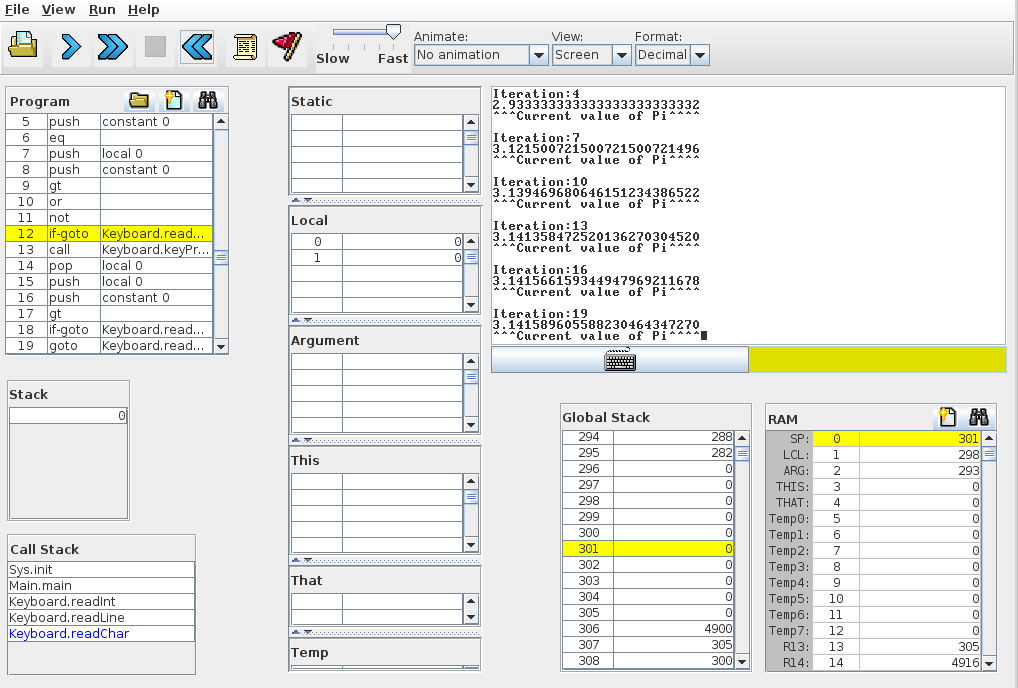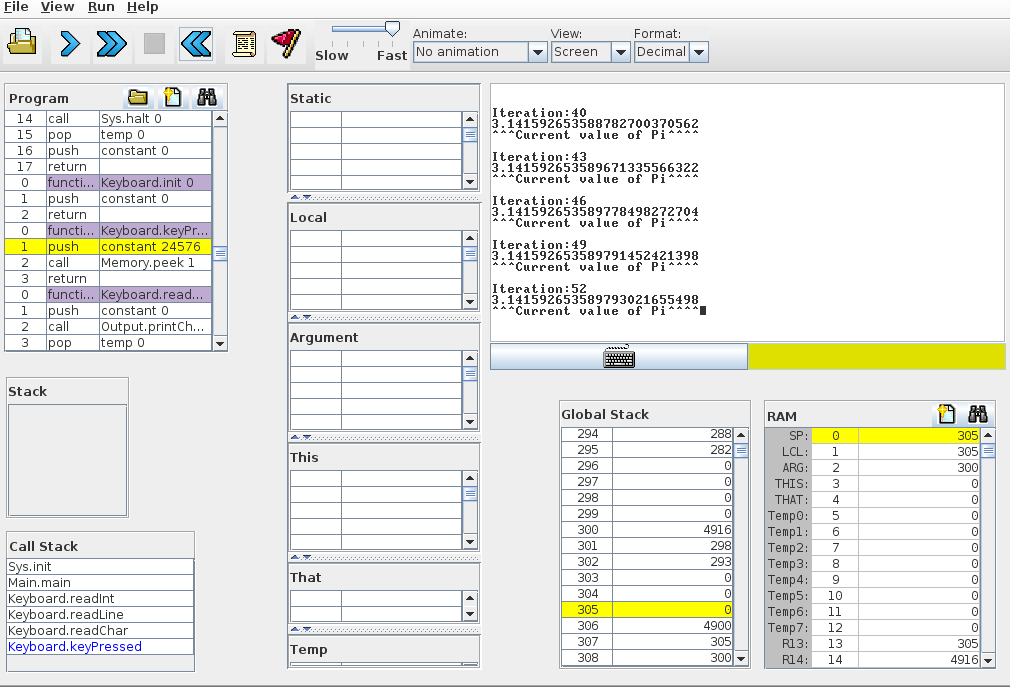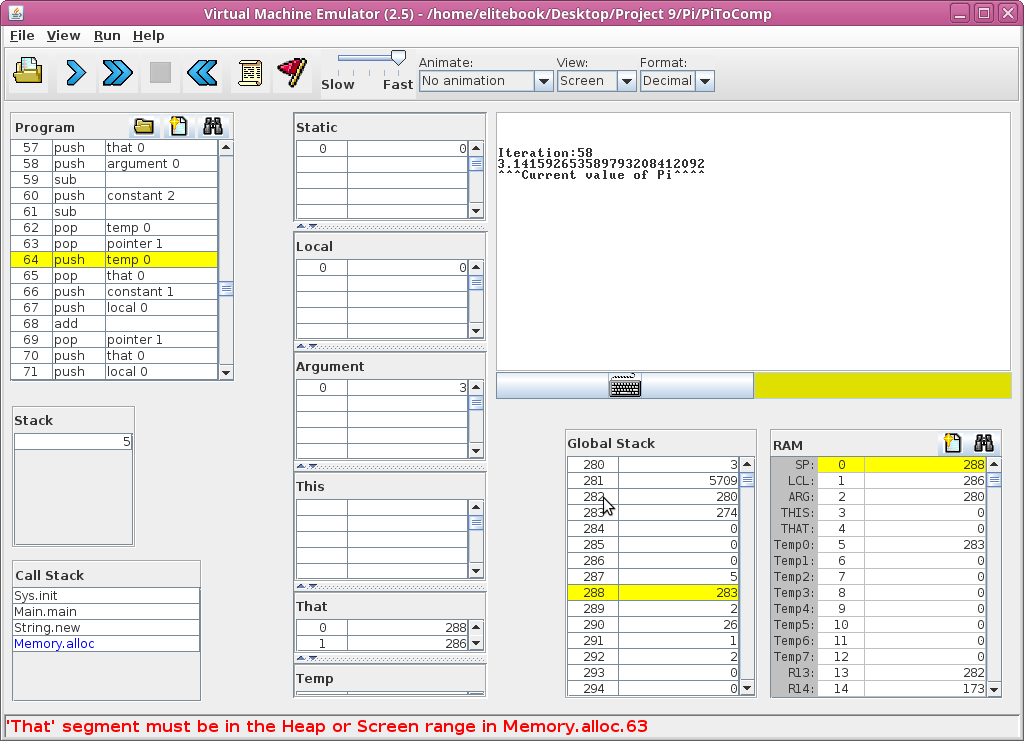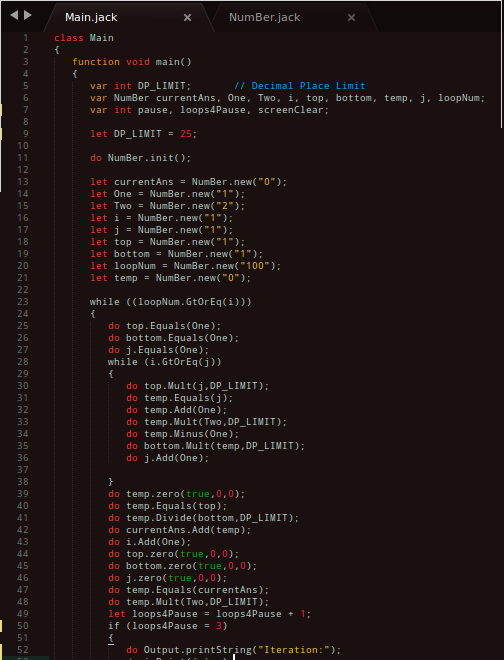With this post in mind:
http://nand2tetris-questions-and-answers-forum.32033.n3.nabble.com/Experienced-People-Please-share-your-struggles-tt4034156.html#a4034226And following on from my post 2 March 2020 on the Mandelbrot Set, I present Pi to 20 ish d.p using the same class that I used to generate the Mbrt Set. Well until it crashed I guess (59!)/(61!!) was a bit too large. My bad, the class can handle that kind of number, but I don't have enough time atm to fettle that much..
Here are some screen shots



And the code (sorry there's absolutely no comments, but if you check out the formula in the Please-Share-your-sruggles post) it should be fairly self explanatory, I hope)


It's a slightly older version than the class I used to generate the Mandelbrot set, hopefully once my work life has sorted itself out, I might be able to do something important and get back to N2T and post some more Mbrt stuff.
Code On !
Lozminda